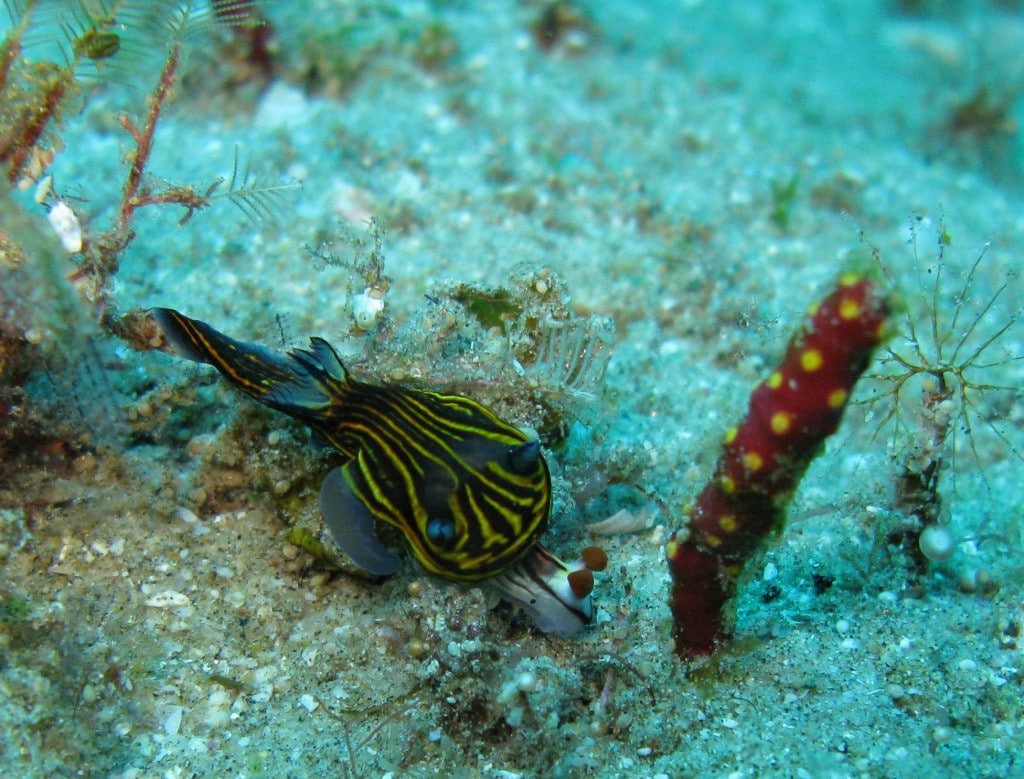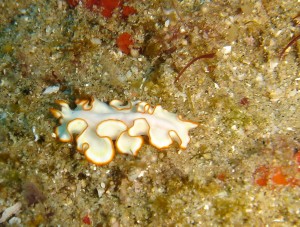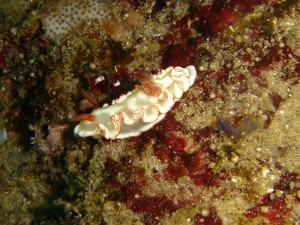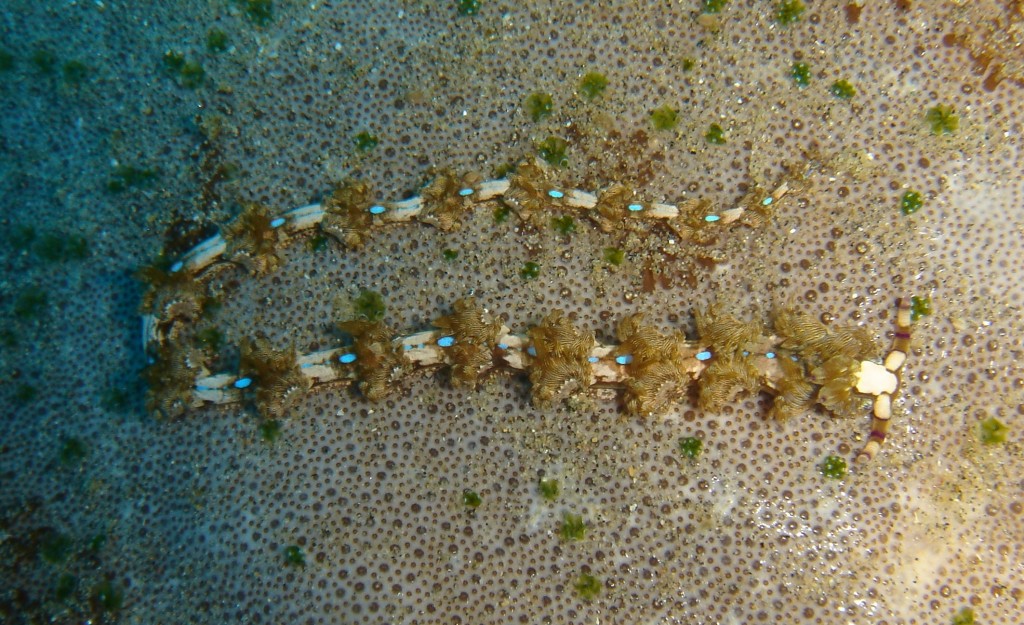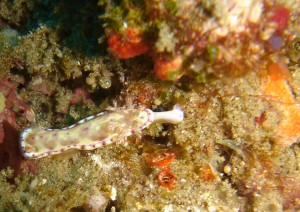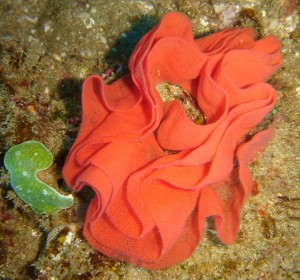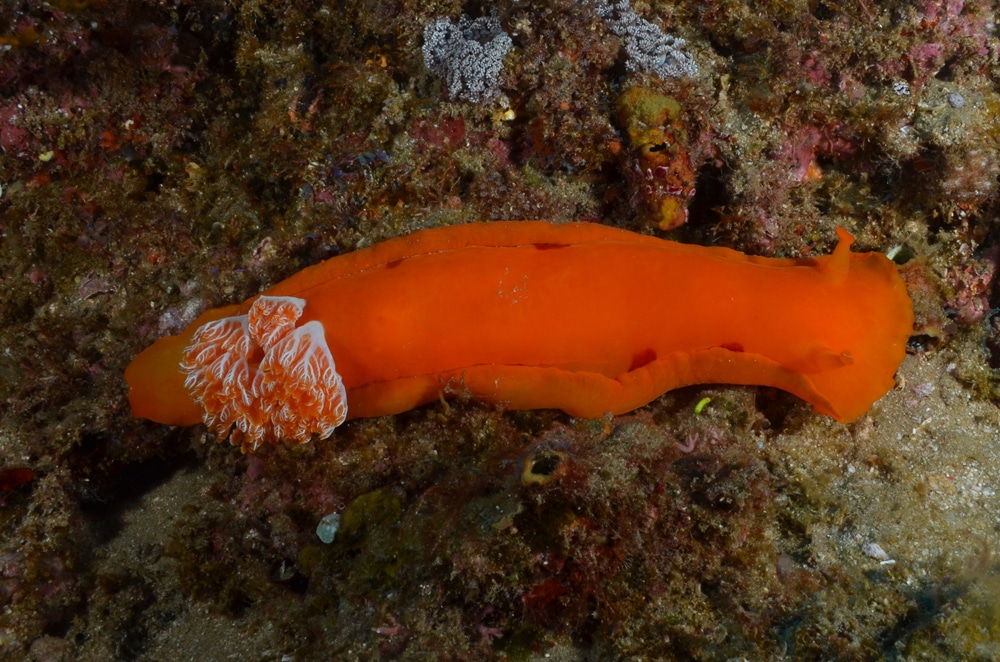News
Nudibranchs and the fabulous Spanish Dancer (Hexabranchus sanguineus)
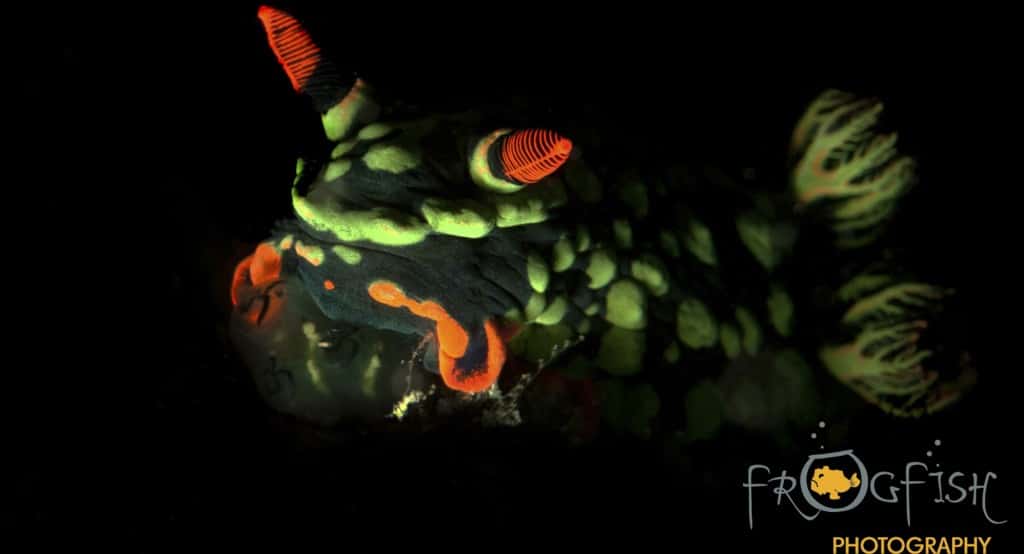
Every good Dive Master/photographer has a problem. They must look after their clients while still taking pictures. They have no time to vary the depth of focus, no time to change camera settings; their dive clients must always come first. Colin Ogden of Amoray Diving at Sodwana Bay solved the problem by shooting nudibranchs, and his study of these amazing creatures has become a passion. I spent a spellbinding evening with him learning about them.
Nudibranchs come in brilliant colours, with fabulous markings, and they can vary in size from 1mm to 600mm. They are primarily carnivores and will eat hydroids and other species of nudibranchs but most of them feed on sponges; all of which are animals. A few will eat algae or seaweed. They feed where food is available so they frequent areas where coral growth is limited; even the cold Northern European waters harbour these colourful sea slugs and nudibranch hunting has become a global passion.
Nudibranch means exposed gills. Hexabranchus, for example, has six sets of exposed gills. All but two nudibranchs are called by their Latin names. The scientific community frowns on them being given common names so the study of these creatures is not for the faint-hearted.
Most of them breath using the exposed bunches of gills on their backs, and their sensual organs are contained in a pair of rhinophores, on the front of their heads. These look like horns. All are hermaphrodite, with both male and female sex organs, which are always on the right hand side, below the neck. These can be expelled to accommodate a large meal, and then re-ingested. All of them are poisonous to fish, and a single nudibranch can kill an entire aquarium full of fish if it becomes stressed and lets off a toxin. This occasionally benefits the palatable flatworm. He sometimes mimics the shape and rhinophores of the poisonous nudibranch, escaping predators and protecting himself.
There is even a species that farms algae in its gills. It is long and thin and has many sets of gills or cerata which he uses to collect algae. You will sometimes find it spread out along the top of the reef on a sunny day, cerata exposed to catch the sun so the algae will grow faster.
The spectacular Spanish Dancer (Hexabranchus sanguineus) is one of the very few nudibranchs that goes by its common name. They grow up to 600mm long, so are clearly identifiable. “They are nocturnal animals in our waters, so we rarely spot them in Sodwana Bay. However, we found two on the point of mating on Seven Mile in broad daylight. They lined up neck to neck, and then they exchanged sperm, fertilising each other. After five or six days each lays a long egg ribbon in a continuous circle, and you can see these on the reef looking like soft rosettes.”
They are normally pink, reddish or orange. These ribbons are preyed upon by other nudibranchs of the Favourinus family and the survivors hatch into tiny nudibranchs that look nothing like their imposing parents.
Other species lay egg ribbons that hatch into tiny veligers, which are a larval stage, and they can float around in the ocean, following currents for months on end. When they sense that there is a food source, they will descend onto the reef and metamorphose into small nudibranchs. The study of these creatures is still in its infancy, although some were described as early as the 1700s, but they are fascinating creatures, and there are still many unnamed and quite rare species in our waters. Once you know what you are looking for, you can find them almost everywhere.
Words: Jill Holloway
Pictures and technical data: Colin Ogden, Amoray Diving
Copyright Ocean Spirit 2017 – www.osdiving.com
Blogs
TRAVEL BLOG: Jeff Goodman Dives SOMABAY, Part 3

Today we are diving one of the outer reefs from an inflatable. As we reach the bottom, a reef octopus eases its way into the cover of a small crack in the coral while displaying it’s incredible ability to change colour. They are arguably one of the most charismatic of reef dwellers and it is always exciting for me to simply hover and watch. I would have spent longer and waited for it to come and investigate me, but as dive time is limited we wanted to move on and find a turtle.
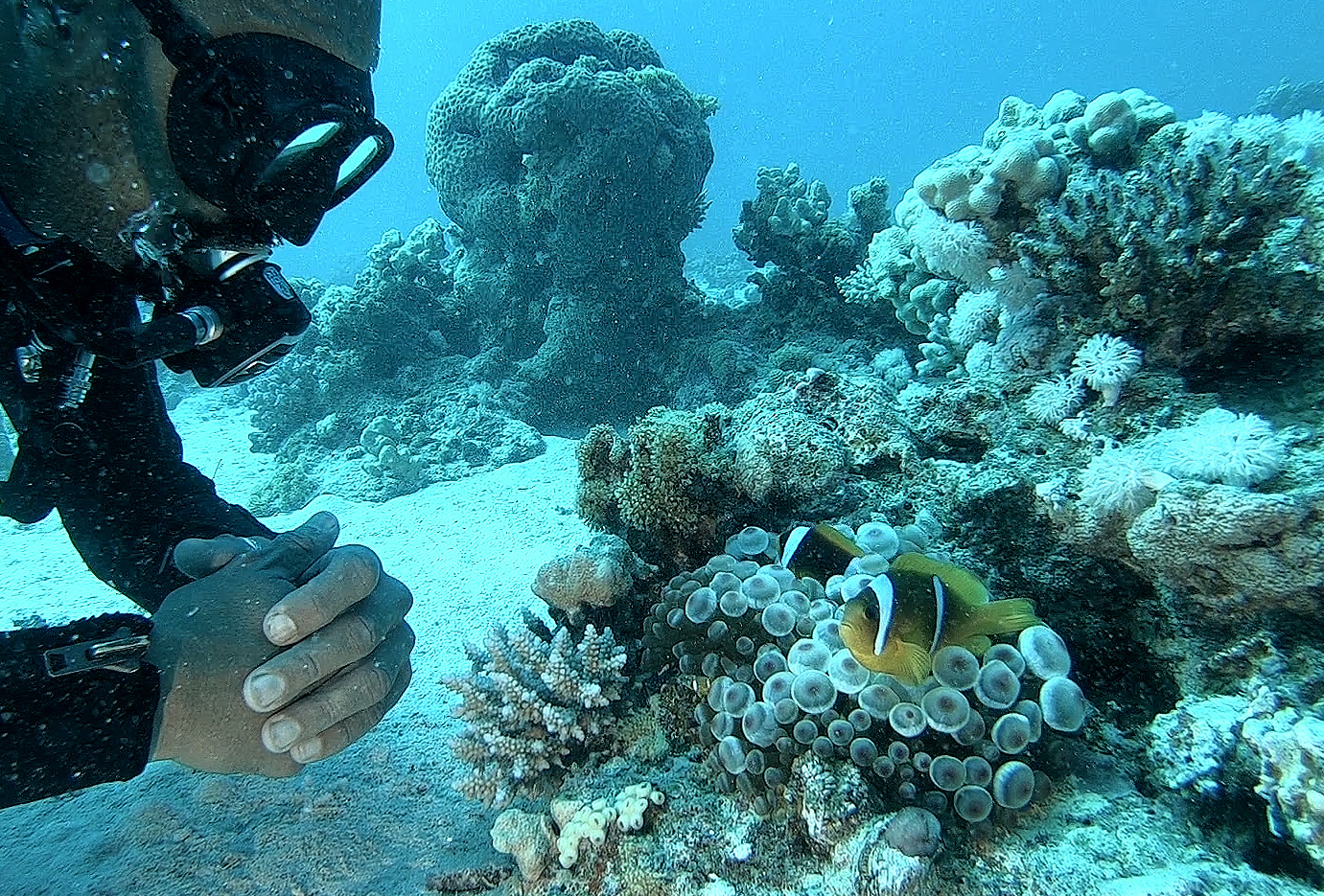
The waters around Somabay are well protected and hold a rich variety of marine life. The reef edges are thriving colonies of coral and shoaling fish, while nearer the sea bed plenty of wildlife is still to be found.
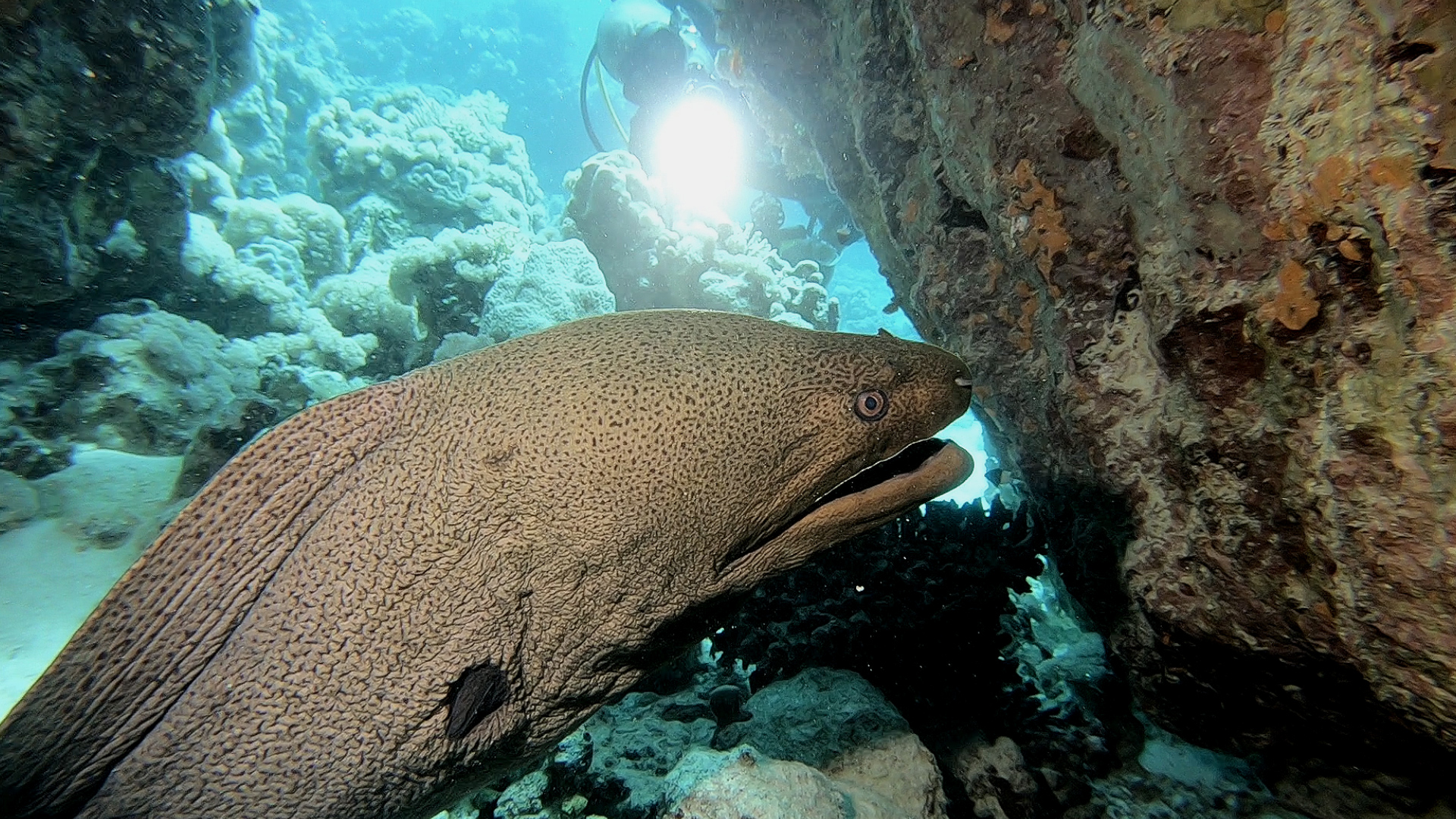
Then we located the turtles. They are very used to divers and so show little concern when slowly approached. In fact occasionally one will come over to see what you are doing. There is always huge excitement when diving with a turtle. The shear thrill of sharing a moment with another species.
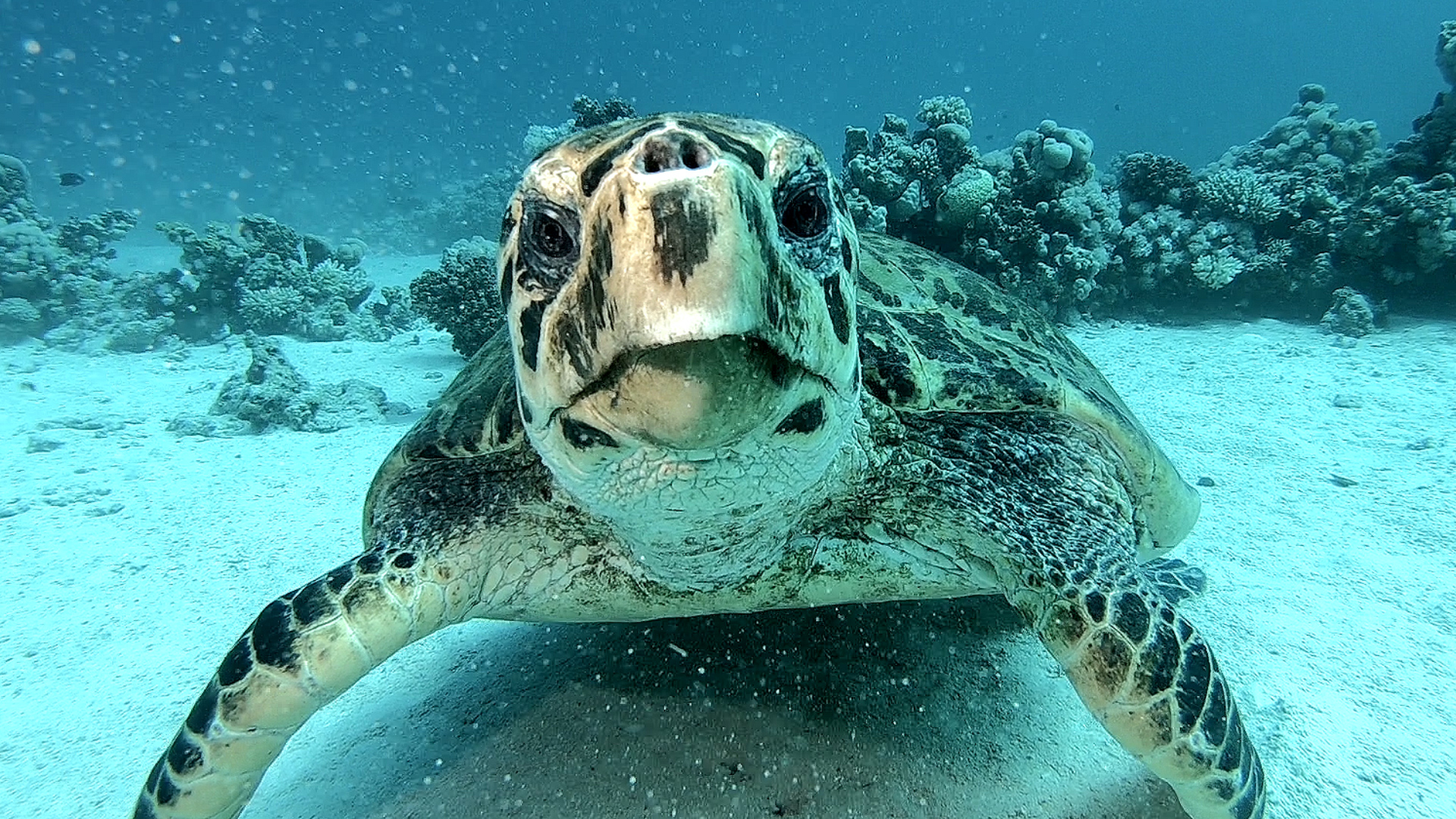
What a fantastic way to finish a wonderful few days diving and I would like to thank SOMABAY, ORCA DIVING and THE BREAKERS for making my stay such a good one.
I had a great time, with diving everyday either on the house reef or on one of the offshore reefs by inflatable or larger day boat. Orca diving provided high quality equipment and facilities while the staff were all very friendly and welcoming. The Breakers was right on the coast with nice rooms, good food and once again friendly staff making the whole trip a real pleasure.
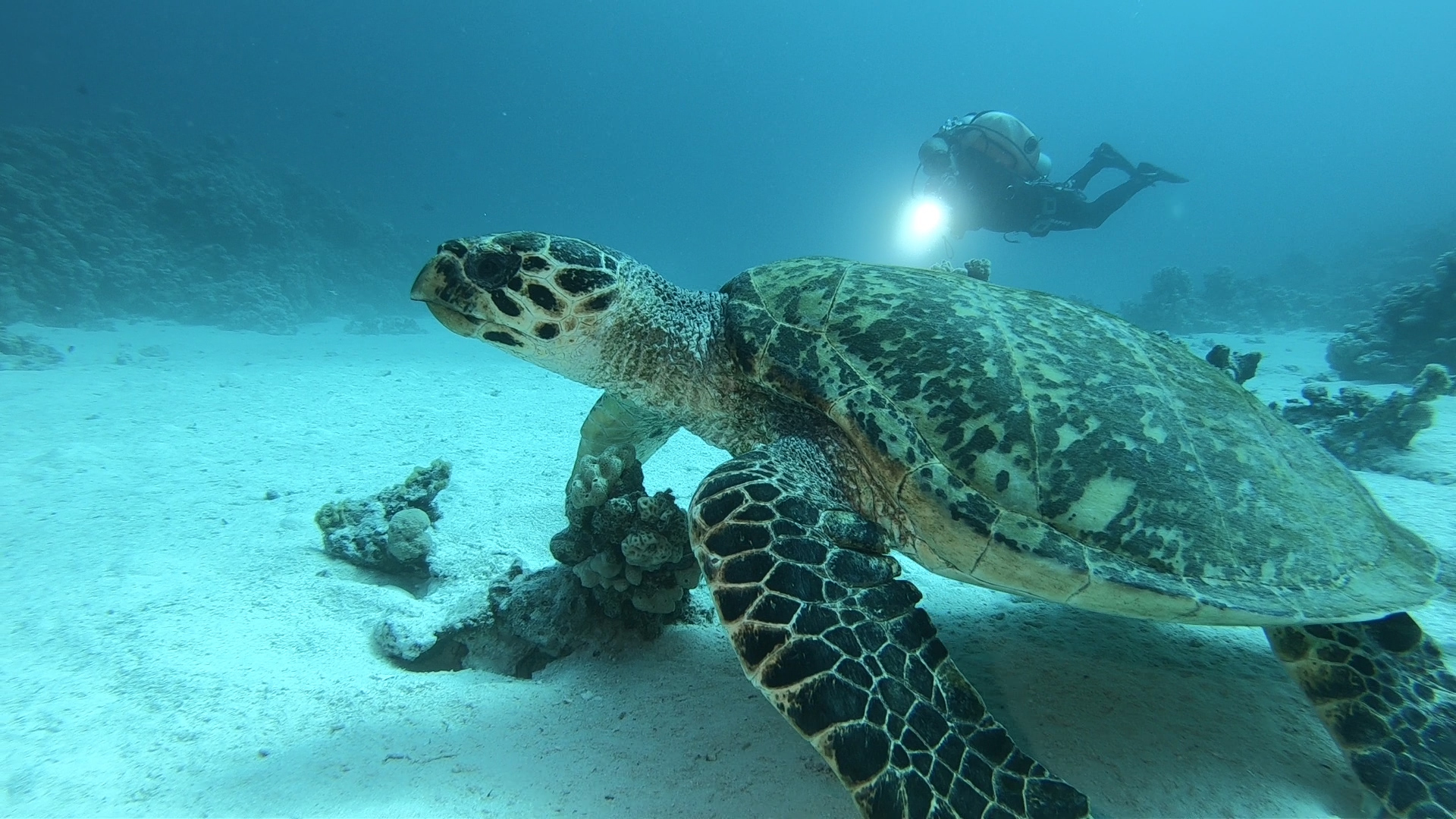
Soma Bay covers an entire peninsula and is home to several resorts as well as residential compounds.
As well as scuba diving, Somabay caters for many other sports and activities, and so is perfect for families as well as individuals and/or groups. And of course there is always time to lay peacefully on the beach under the Egyptian sun.
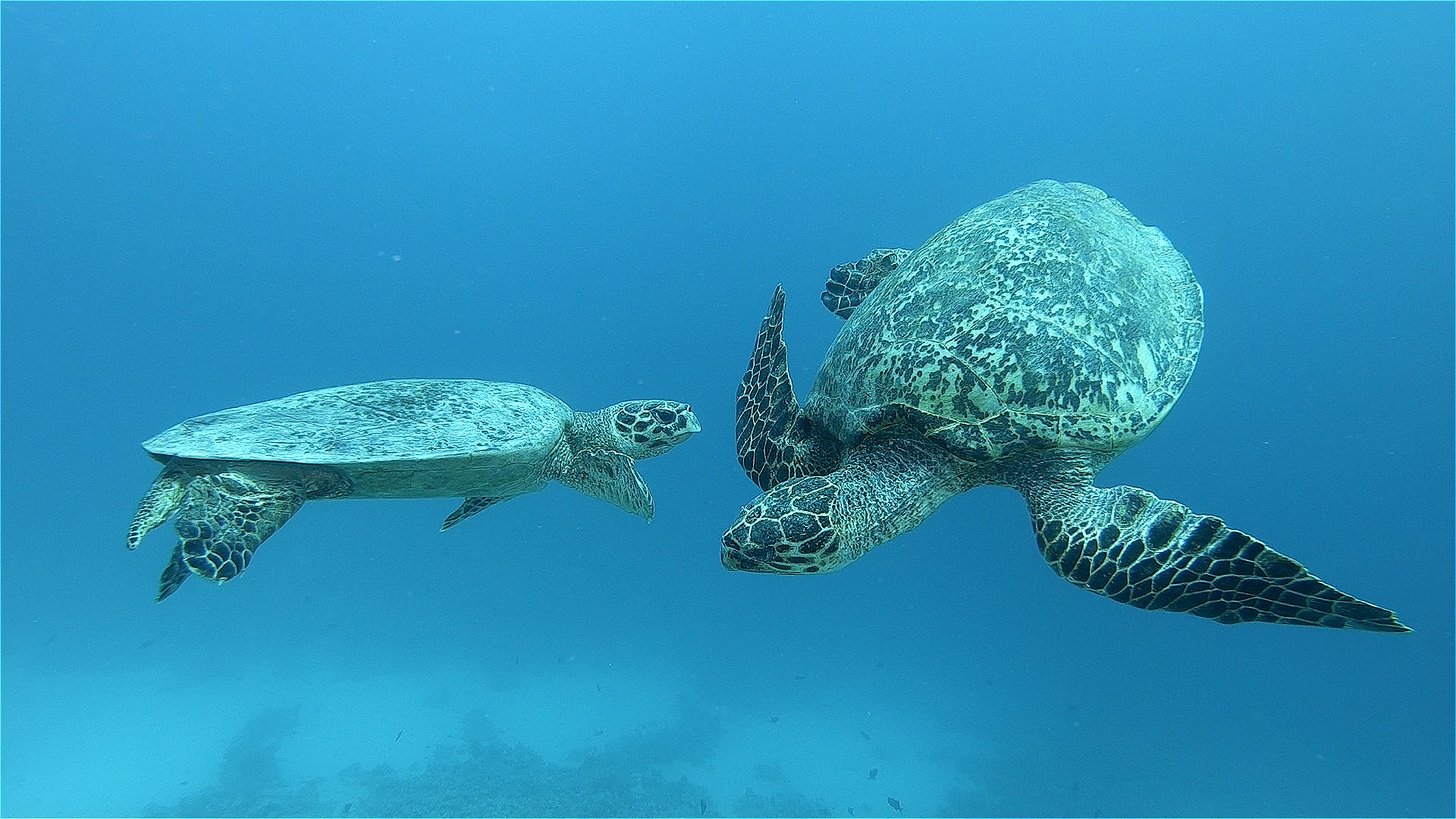
Book your next Red Sea dive adventure with SOMABAY! For more information, visit www.somabay.com.
Stay at the Breakers Diving & Surfing Lodge when you visit! For more information, visit www.thebreakers-somabay.com.
Find out more about ORCA Dive Clubs at SOMABAY at www.orca-diveclubs.com/en/soma-bay-en.
Blogs
TRAVEL BLOG: Jeff Goodman Dives SOMABAY, Part 2

Day three of my trip to Somabay and we were spending the day on the Lady Christina and diving on the wreck of the Salem Express.
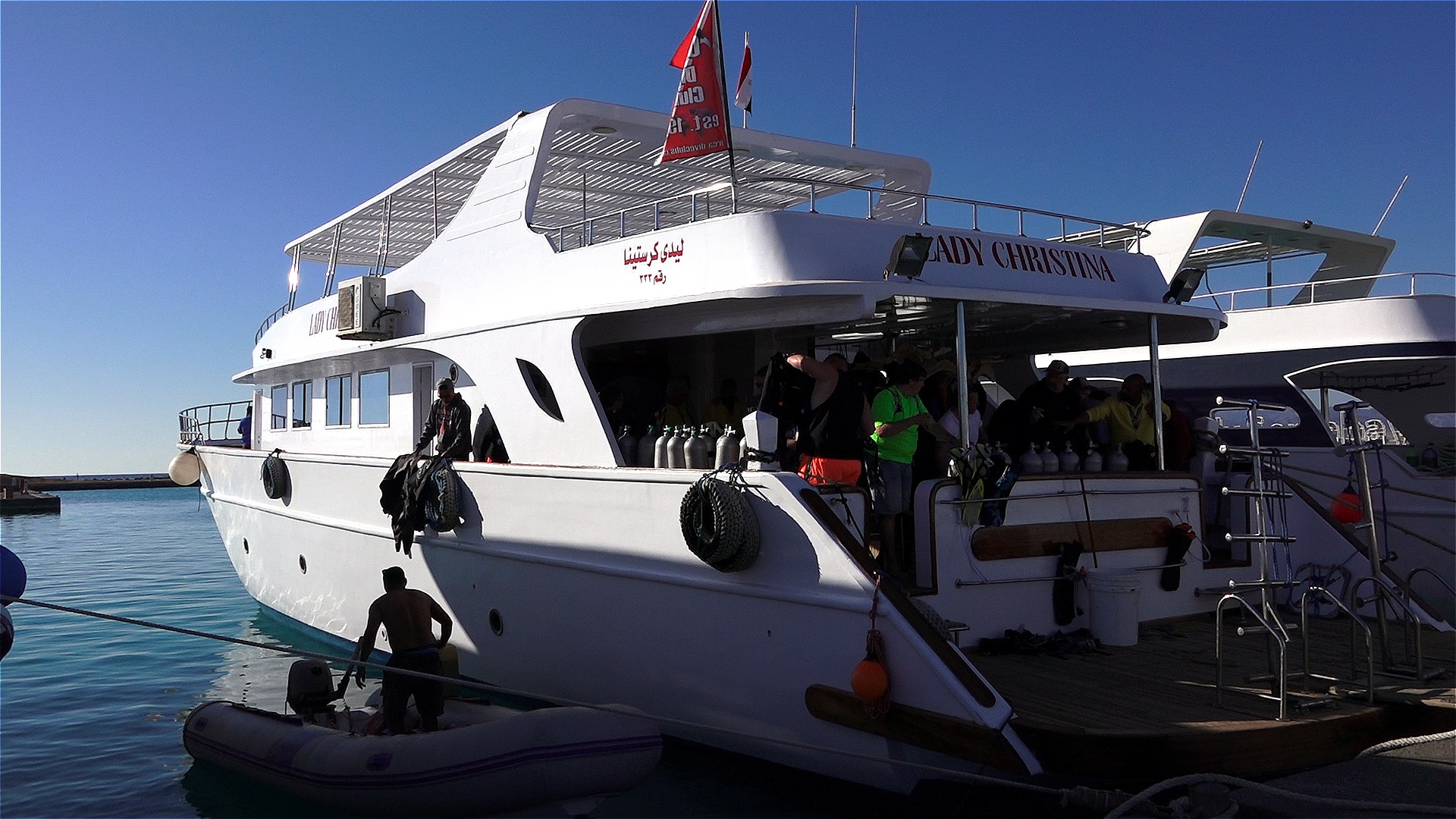
Diving wrecks for me is always one of mixed emotions. The excitement of diving a wreck is more than often tempered by the thought of loss of life when she sank. The Salem Express was a passenger ship and a roll-on/roll-off ferry travelling from Jeddah, Saudi Arabia to Safaga, Egypt. Most passengers were of poor class travelling home from their holidays while around 150 people were returning home from their pilgrimage to Mecca.

The ship struck a reef and sank within 20 minutes. Passengers were trapped below deck and the ship was filled with fear and panic.

The wreck area is strewn with personal belongings from the crew and passengers such as a transistor radio and a flat iron for clothes. A diver at sometime has put them in a prominent place to be seen.

Tragically only one life boat was launched while the others went down with the ship. More than 600 men, women and children lost their lives here.

It’s a stark reminder that the sea can be unforgiving and so when we dive on such wrecks we should do so with humble regard.
Returning to the surface, shoals of fish are gathered under our boat and seem to be welcoming us back into the light.
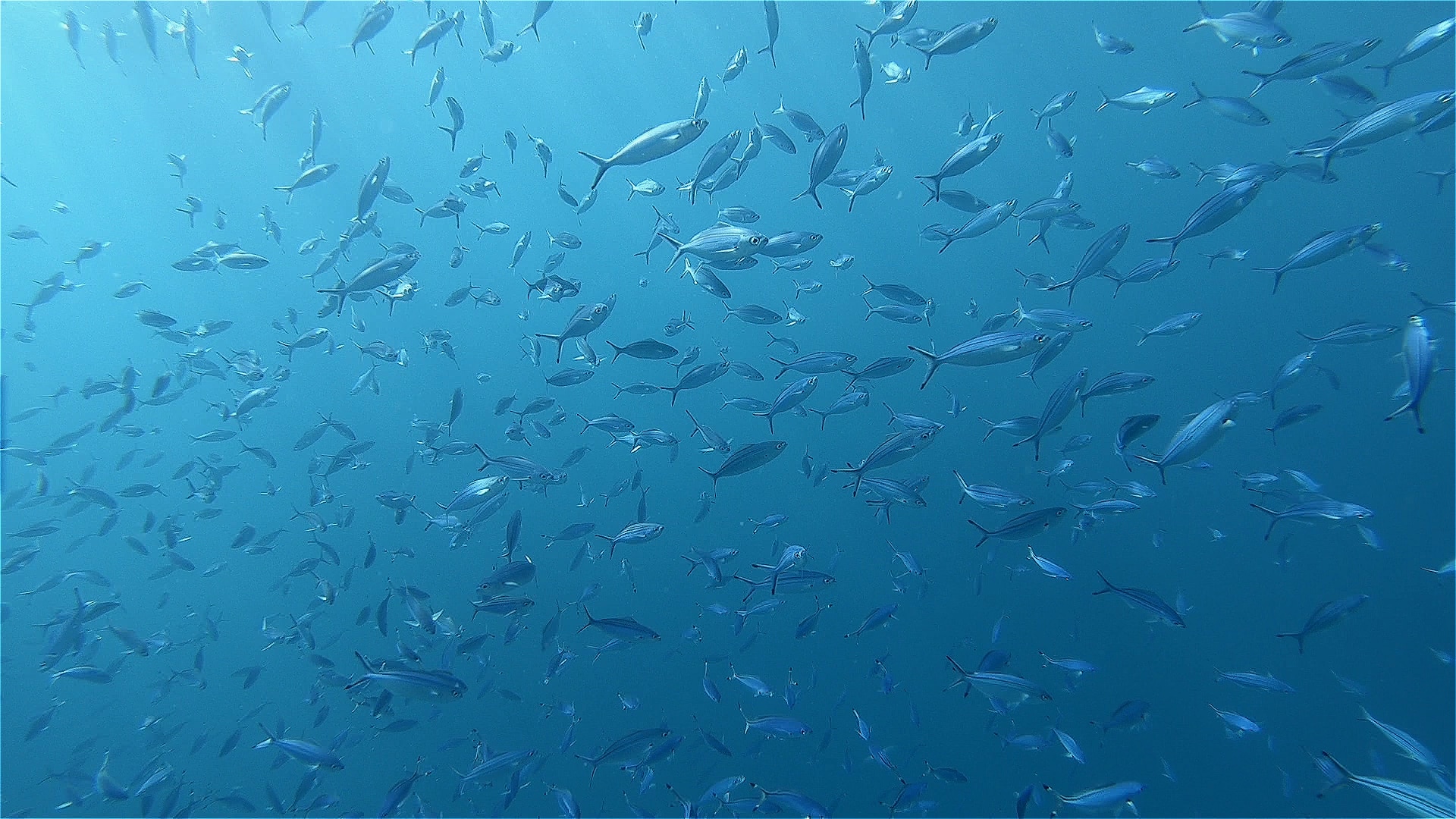
Back at the Breakers I sat in the dining area with a beer and a very good meal while my thoughts still remained with the day’s dive on the Salem Express.
Check in for part 3 tomorrow for Jeff’s last day of diving with Somabay on the off-shore reefs looking for turtles.
Book your next Red Sea dive adventure with SOMABAY! For more information, visit www.somabay.com.
Stay at the Breakers Diving & Surfing Lodge when you visit! For more information, visit www.thebreakers-somabay.com.
Find out more about ORCA Dive Clubs at SOMABAY at www.orca-diveclubs.com/en/soma-bay-en.
-

 News3 months ago
News3 months agoHone your underwater photography skills with Alphamarine Photography at Red Sea Diving Safari in March
-

 News2 months ago
News2 months agoCapturing Critters in Lembeh Underwater Photography Workshop 2024: Event Roundup
-

 Marine Life & Conservation Blogs2 months ago
Marine Life & Conservation Blogs2 months agoCreature Feature: Swell Sharks
-

 Blogs1 month ago
Blogs1 month agoMurex Resorts: Passport to Paradise!
-

 Gear News3 months ago
Gear News3 months agoBare X-Mission Drysuit: Ideal for Both Technical and Recreational Divers
-

 Blogs2 months ago
Blogs2 months agoDiver Discovering Whale Skeletons Beneath Ice Judged World’s Best Underwater Photograph
-

 Gear Reviews2 months ago
Gear Reviews2 months agoGear Review: Oceanic+ Dive Housing for iPhone
-
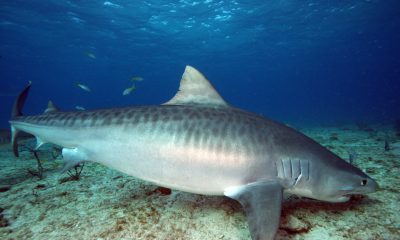
 Blogs3 months ago
Blogs3 months agoThe Thrilling Encounter with Tiger Sharks at Beqa Lagoon’s ‘The Colosseum’ with Coral Coast Divers


